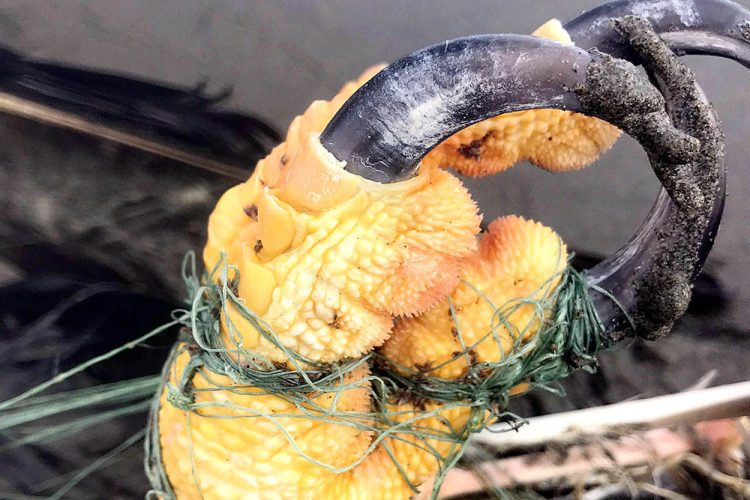The foot of a bald eagle that got tangled in discarded fishing line and died because
it could no longer catch its prey. Proper disposal of used fishing line can help prevent
incidents like this. (Credit: courtesy of Coastal Raptors)
Pick It Up!
Source: Arizona Game & Fish Department
Discarded fishing line can harm eagles and other wildlife.
In a recent news release, the Arizona Game and Fish Department (AZGFD) reminded anglers of the importance of proper fishing line disposal after AZGFD biologists had to remove a tangled fledgling from the wild and take it to wildlife rehabilitators.
Nest watchers at Willow Springs Lake noticed the eaglet with fishing line wrapped around one of its legs. AZGFD biologists tried multiple times but were unable to safely access the nest.
“So, we had to wait until it fledged,” said Kenneth “Tuk” Jacobson, AZGFD raptor management coordinator. “Once it took its first flight, we were able to capture it and found that the fishing line had caused a severe wound to the eagle’s leg.”
The eagle was taken to Liberty Wildlife for treatment and is expected to make a full recovery, but not every animal is as lucky. Fishing line can immobilize wild animals by wrapping around their legs, or by securing them to a stationary object. Starvation is the most common demise, however. The line wraps around the animal’s neck or accumulates in their stomach, preventing the ingestion of food.
“Fishing line can last up to 600 years in the environment,” said Jacobson. “Whether you’re fishing or just encounter some monofilament while enjoying the outdoors, disposing of fishing line properly is an easy and lifesaving thing to do for wildlife.”
Any trash can will do, but thanks to the Monofilament Recovery Program, there are at least 85 recycling bins for fishing line at lakes and rivers throughout the state, targeting bald eagle breeding areas and high-use recreation sites.
Along with properly disposing of used fishing line, Jacobson has these tips for anglers:
- Use the appropriate test line for the desired fish and fishing technique. A 6-pound-test line will work great for crappie and smallmouth bass, but a 20-pound test should be used for flathead catfish. In addition, trolling or bank fishing anglers should use a stronger pound-test line than those casting or jigging.
- Replace your fishing line yearly. Over time, normal wear and tear, plus extreme temperatures and ample sunlight, can cause monofilament to become damaged or brittle. By regularly replacing your monofilament line, you can reduce the chance of breaking it.
For more information about the Monofilament Recovery Program, visit the Southwestern Bald Eagle Management Committee’s webpage.



